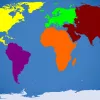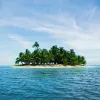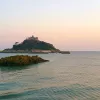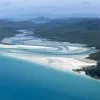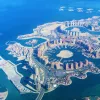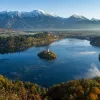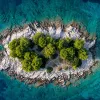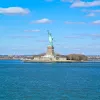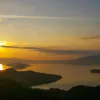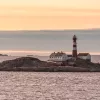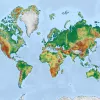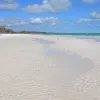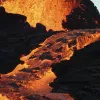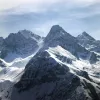Important update from TheSchoolRun
For the past 13 years, TheSchoolRun has been run by a small team of mums working from home, dedicated to providing quality educational resources to primary school parents. Unfortunately, rising supplier costs and falling revenue have made it impossible for us to continue operating, and we’ve had to make the difficult decision to close. The good news: We’ve arranged for another educational provider to take over many of our resources. These will be hosted on a new portal, where the content will be updated and expanded to support your child’s learning.
What this means for subscribers:
- Your subscription is still active, and for now, you can keep using the website as normal — just log in with your usual details to access all our articles and resources*.
- In a few months, all resources will move to the new portal. You’ll continue to have access there until your subscription ends. We’ll send you full details nearer the time.
- As a thank you for your support, we’ll also be sending you 16 primary school eBooks (worth £108.84) to download and keep.
A few changes to be aware of:
- The Learning Journey weekly email has ended, but your child’s plan will still be updated on your dashboard each Monday. Just log in to see the recommended worksheets.
- The 11+ weekly emails have now ended. We sent you all the remaining emails in the series at the end of March — please check your inbox (and spam folder) if you haven’t seen them. You can also follow the full programme here: 11+ Learning Journey.
If you have any questions, please contact us at [email protected]. Thank you for being part of our journey it’s been a privilege to support your family’s learning.
*If you need to reset your password, it will still work as usual. Please check your spam folder if the reset email doesn’t appear in your inbox.
Islands and continents

Continents and islands are both words to describe areas of land. They mean different things because continents are much larger than islands, and islands always have water all around them.
The island of Great Britain is part of the British Isles (a group of islands which also includes Ireland and lots of smaller islands).
There are seven continents in the world, and tens of thousands of islands. Some are connected to each other, and some are surrounded by water – like Australia – but these are too large to be an island. Greenland is the largest island in the world, and it is a lot smaller than Australia.
Top 10 facts
- Continents are very, very large areas of land. There are seven continents in the world.
- Asia is the largest continent, and Africa is the second largest.
- The smallest continent by land area, Oceania is made up of the landmasses of Australia, Papua New Guinea, New Zealand and lots of other islands.
- Islands are a lot smaller than continents, and are completely surrounded by water.
- There are over 100,000 islands in the world.
- There are two types of islands – continental and oceanic.
- Continental islands are located near continents, and are part of continental shelves.
- Oceanic islands are far away from any land. Many oceanic islands are also volcanoes.
- Great Britain and Ireland are islands – they are both part of Europe, but not part of the continent of Europe.
- Islands are located in all shapes and sizes in bodies of water all over the world.


Boost Your Child's Learning Today!
- Start your child on a tailored learning programme
- Get weekly English & maths resources sent direct to your inbox
- Keep your child's learning on track
Did you know?
- There are seven continents: Europe, Asia, Africa, Oceania, North America, South America and Antarctica.
- Asia is the largest continent, and makes up one-third of the land on the Earth’s surface.
- Africa is the second largest continent.
- Great Britain and Ireland are islands.
- The largest island in the world is Greenland.
- Very small islands are called islets.
- Some islands are formed by sand moved by the ocean. Fraser Island, off the coast of Australia, is the world's largest sand island and is 76 miles long and 14 miles wide.
- Australia is surrounded by water, but is too large to be an island. It is sometimes called the island continent.
- Antarctica changes size during the year – in the winter, it grows almost twice as large as it is in the summer because so much of the sea around the land freezes.
- Some islands are also volcanoes – the largest volcanic island is Sumatra.
Pictures of islands and continents
Have a look through the images in the gallery and see if you can spot the following:
- A map showing all the continents
- A tropical island
- St Michael's Mount in Cornwall, an example of a tidal island (type of continental island)
- The Whitsunday islands in Australia
- Artificial (man-made) islands in Qatar
- An islet in Lake Bled, Slovenia
- A rocky island in Croatia
- One of the world's most famous landmarks, the Statue of Liberty in New York City, is on an island (Ellis Island)
- Islands in Scotland
- A lighthouse on an island in Norway
- Isola Bella on Lake Maggiore in Italy
- World continents
- Fraser Island, Australia
Gallery
About
The continents we know today formed because of tectonic plates, which are different pieces that fit together to make up the Earth’s surface. These pieces can move, and when they do it affects the land above them.
The movement of tectonic plates can also explain the formation of islands. Some islands used to be part of continents, but broke off or are now visible because of the land joining them to the continent washing away. Continental islands include barrier islands that run parallel to the coastline of a continent, islands that form on top of coral reefs, or islands that look like they’re part of the mainland when the tide is out but are surrounded by water when the tide is in (tidal islands). Other islands form because of the pile of ash and lava that has built up from underwater volcanic eruptions.
It all boils down to two main types of islands:
- Continental – continental islands used to be part of a continent, and are attached to the continental shelf; they are always near continents
- Oceanic – oceanic islands form because of underwater volcanoes that have erupted enough times to go rise above the water
Famous islands and island countries around the world:
- Greenland
- Iceland
- Faroe Islands (part of Denmark)
- Florida Keys (USA)
- Hawaiian islands (USA)
- Madagascar
- Jamaica
- Canary Islands (Spain)
- Sicily (Italy)
- Lord Howe islands (Australia)
- Japan
- Indonesia (made up of 17,000 islands!)
The British Isles are made up of two large islands, Great Britain (where England, Wales and Scotland are) and Ireland (where Northern Ireland and Ireland are), and lots of smaller islands.
Famous islands in the UK:
- Isle of Man
- Isle of White
- Scilly Isles: Annet, Bryher, Gugh, Samson, St Agnes, St Helen's, St Martin's, St Mary's, Tresco
- Anglesey
- Outer Hebrides
- Inner Hebrides (includes the Isle of Skye)
- Orkney
- Shetland
- Fair Isle
- Channel islands (includes Guernsey and Jersey)
Words to know
Archipelago – a chain of islands
Cays (or, keys) – small, sandy islands that have been formed on top of coral reefs; the Florida Keys are an example of this
Continental shelf – extra land around continents that’s completely underwater
Islets – small islands
Tectonic plates – large pieces of rock that make up the Earth’s surface
Related Videos
Just for fun...
- How many continents and oceans can you name correctly?
- Print out some blank continent maps and make your own 3D globe
- Colour in the seven continents on this map
- Could you create your own island? There are lots of creative island-mapping ideas here to get you started
Children's books about islands and continents
Find out more
A children's introduction to continents
Discover why islands are often home to some very unusual creatures
Pig Island, in the Bahamas, is home to more than 30 sea-swimming pigs!
Information about the largest islands in the world
Fun facts about islands
See for yourself
- The National Geographic guide to islands
- Continental and oceanic islands, plus a list of the largest islands in the world
- Explore the Galápagos Islands
